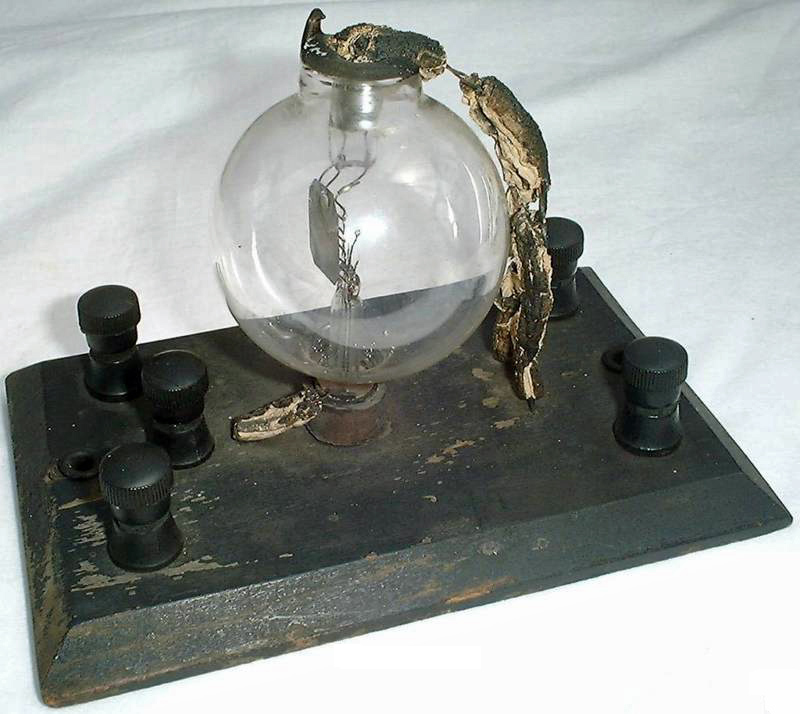|
This is the text of an advert that appeared in: Gernsback's Electro Importing Company catalogue of 1913.

The 'Electro' Audion
After long deliberation, we herewith present the best audion manufactured today in the United States. Of all the detectors in use, none present the accumulation of advantages offered by the Audion, the 'electro' model being designed from the result of long and extended experiments. While the crystal types of detector present many advantages, they have the one great defect of not holding their adjustment, especially on receiving from a nearby station. The Audion, not only ranks as the highest in sensitiveness, but possesses that much sought for characteristic, stability of adjustment. Loud signals do not affect the adjustment, and, on the contrary, seem to improve the sensitiveness. When receiving from loud or nearby stations, the light will be noticed to flicker in the bulb, and the signals can thus be read without the use of a telephone receiver, this feature being found in no other detector. Signals received by the Audion are extremely loud, and most stations in the vicinity of the receiving station may be heard with the phones three feet or more from the operator's ears.
The 'electro' Audion consists of a vacuum bulb containing two filaments of tantalum, connected in series with a lead taken off at the connecting point of both filaments. One filament is used at a time, and at the exhausting of one filament, the other may be resorted to. This gives double the life which is obtainable from other audions. The filaments are used on 4 Volts, which may be obtained from a storage battery or dry cells. The bulb also contains a wire which is bent in a zig-zag form, and called the 'grid'. A small sheet of nickel foil is also contained in the bulb. It is behind the grid and the metal foil. Under normal conditions, the current from 30-35 Volt battery connected with a telephone receiver has great difficulty in passing through the heated vacuum space. However, on reception of the wave trains, the current from the battery passes through the vacuum and produces an audible sound in the receiver. The audion is the most suited detector for wireless telegraphy, owing to its faithful reproduction of every wave. The 30-35 Volts required for the telephone receiver circuit, may be obtained from 6-7 flashlight batteries. Inasmuch as the current used is practically zero, a set of these cells will last for a long time. The apparatus is connected as shown in the diagram.
In this instance a loose-coupler is shown, giving the set the maximum degree of selectivity. The rotary rheostat is also used, our No. 5000, which is very suitable for this purpose in regulating the filament current. The flash lamp dry cells are also shown connected in series with the telephone receiver.
IMPORTANT: On account of great manufacturing difficulties we do not guarantee the audion. We carefully test each and every one but cannot take back Audions under any circumstances whatever.
Full instructions given with each instrument. Size of base, 5< inches x 3= inches. Height 3= inches.
No. 8200. The 'Electro' Audion as described and illustrated. $5.00.
|